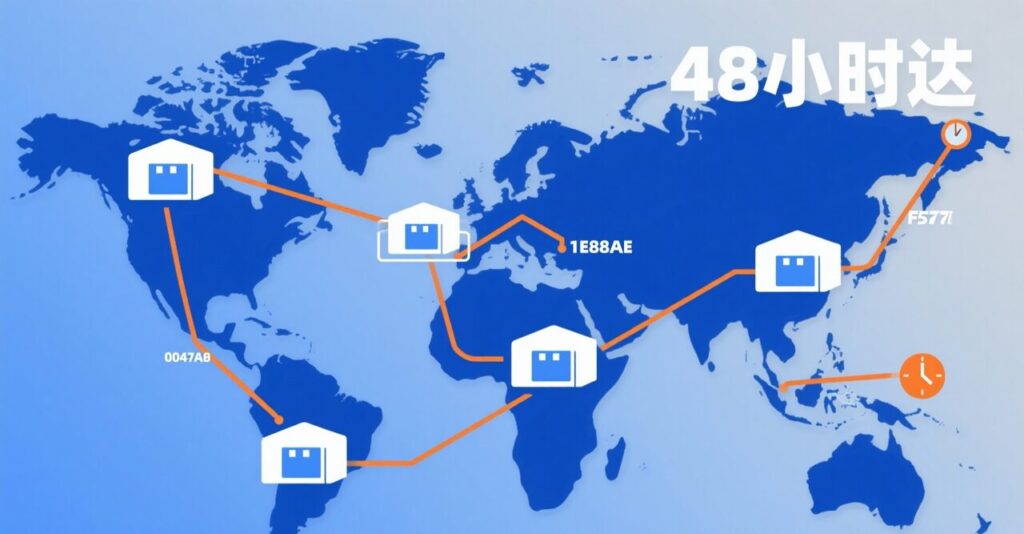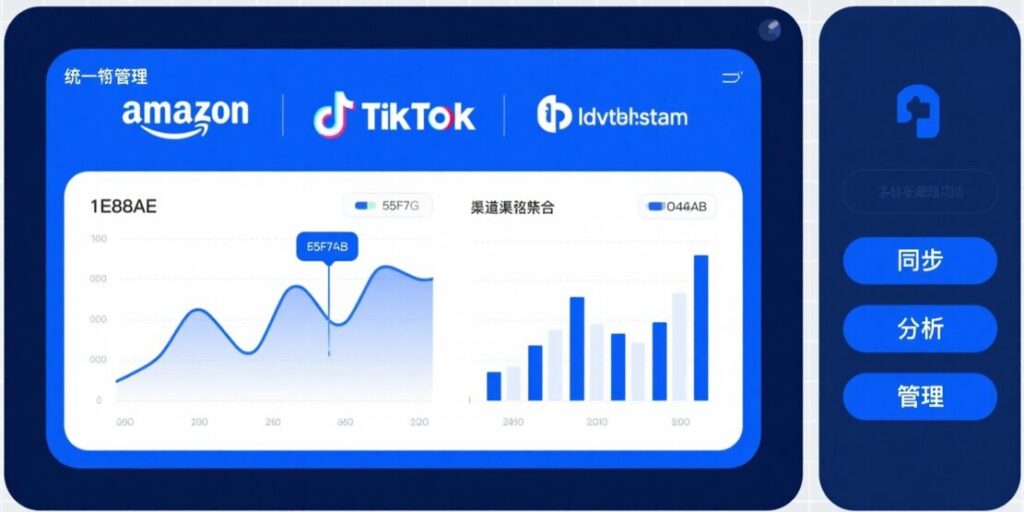The ongoing volatility in the global economy and trade has ushered the cross-border e-commerce industry into an era of "resilient competition." According to Amazon's *2025 Global Cross-Border E-Commerce Supply Chain Trends Report*, rapid fulfillment capabilities (such as same-day or next-day delivery) have become a core metric for customer satisfaction. Meanwhile, logistics delays, slow customer response, and the complexity of multi-channel operations have emerged as the three major pain points constraining seller growth. This article will analyze, from a practical perspective, how to address these challenges through three key solutions, helping sellers build a risk-resilient supply chain system in an uncertain environment.

**I. Pain Points: The Three Core Challenges in Cross-Border Supply Chains**
1. **Logistics Delays: From "Time Anxiety" to "Customer Loss"**
Under traditional cross-border logistics models, sellers often face an extended supply chain: 30 days for sea freight, 7 days for customs clearance, and 10 days for last-mile delivery. During peak seasons, extreme cases such as "goods stranded at ports for one month" are not uncommon. Taking the Brazilian market as an example, a NielsenIQ June 2025 survey shows that 66% of consumers rank price as the top factor in purchasing decisions, with fast delivery coming in second at 45%. Logistics delays not only increase negative reviews by 30%, but also directly result in a 30% loss of potential customers due to abandoned purchases.
2. **Slow Customer Response: The "Service Gap" Caused by Time Zone Barriers**
When Chinese seller customer service teams log in at 9 AM Beijing time, their European and American customers are often still asleep. Meanwhile, during Southeast Asian customers' peak hours at noon, Chinese teams may be on lunch break. This time zone mismatch results in 70% of inquiries going unanswered within 24 hours, directly affecting conversion rates. One 3C product seller revealed that due to an "average response time exceeding 12 hours," its European store rating dropped from 4.8 to 4.2, with traffic declining by 25%.
3. **Complex Multi-Channel Operations: Traffic Fragmentation and Content Adaptation Challenges**
To diversify risks, sellers commonly operate across multiple platforms such as Amazon, TikTok Shop, and independent websites. However, each platform has significantly different rules: Amazon emphasizes A+ page compliance, TikTok relies on creative short videos, and independent sites require SEO optimization. One home goods seller reported that maintaining content across five platforms accounts for 40% of total operational costs, with "inconsistent multilingual translation quality leading to a threefold difference in conversion rates."

**II. Solutions: Three Strategies to Enhance Supply Chain Resilience**
**Strategy 1: Real-Time Inquiry Handling — An AI-Driven "Instant Response" System****Core Principle:** Shorten customer waiting time through automation tools, shifting from "passive replies" to "proactive engagement."
**AI-Powered Customer Service:** Deploy AI chatbots supporting 16 languages that automatically identify common issues (e.g., shipment tracking, return policies) and provide instant responses. Complex inquiries are escalated to human agents, improving response efficiency by 60%. For example, after implementing AI customer service, a clothing seller increased nighttime inquiry conversion rates from 8% to 22%.
**Inquiry Tiering Mechanism:** Classify inquiries into A/B/C levels based on customer purchase history and keyword analysis (e.g., "bulk order," "sample request"). High-intent A-level customers trigger a "human follow-up within one hour" process to ensure no high-value orders are lost.
**Strategy 2: Intelligent Time Zone Operations — "Doing Business Where the Sun Shines" with Localized Fulfillment**
**Core Actions:** Combine overseas warehouse strategies with dynamic operational planning to improve both logistics and service timeliness.
**Pre-Stocking in Overseas Warehouses:** Establish overseas warehouses in key target markets. For instance, pre-stocking 30% of inventory in Amazon warehouses in California, USA, and Berlin, Germany, shortens delivery times from over 20 days to just 3–5 days. Amazon data shows that sellers using FBA (Fulfillment by Amazon) achieve a 35% higher conversion rate than those using self-fulfillment.
**Time Zone-Based Shift Scheduling:** For the European and American markets, form a "night shift customer service team" (Beijing time 8 PM–4 AM next day), supported by intelligent scheduling systems to assign tasks automatically. For Southeast Asia, adopt a "morning + afternoon shift" model to ensure dedicated support during local active hours (9 AM–6 PM).
**Strategy 3: Multi-Channel Traffic Integration — AI-Driven "Unified Global Content Operations"**
**Key Breakthrough:** Leverage technology tools to address multilingual content creation and platform-specific adaptation, reducing operational complexity.**Unified Content Management Platform:** Use SaaS tools that support multi-platform account integration to enable "one-time editing, multi-channel publishing." For example, product descriptions published on an independent website can be automatically adapted to Amazon A+ page formats and TikTok video scripts.
**AI-Driven Localization Optimization:** In multi-channel traffic integration, use AI to generate and optimize multilingual content accurately. For instance, AI-powered multilingual business cards and smart SEO features allow enterprises to generate brand display pages tailored to different markets and automatically optimize keyword rankings, efficiently reaching global customers without heavy investment in multilingual translation or platform testing.
**III. Conclusion: Resilient Supply Chains — From "Survival Necessity" to "Growth Engine"**
In the context of increasing global economic and trade uncertainty, supply chain resilience is no longer optional—it has become a core competitive advantage determining sellers' survival. By accelerating inquiry handling to shorten conversion paths, optimizing customer experience through intelligent time zone operations, and reducing management costs through multi-channel integration, companies can not only withstand external risks but also transform "supply chain advantages" into "brand premiums." As emphasized in Amazon’s *2025 Global Cross-Border E-Commerce Supply Chain Trends Report*, "rapid fulfillment capabilities will become the 'new infrastructure' for cross-border e-commerce, with technology tools serving as the core components of this infrastructure."

For small and medium-sized sellers, there is no need to pursue a "large and comprehensive" self-built system. Instead, by gradually optimizing through lightweight tools (such as AI customer service and intelligent content platforms), they can achieve a "from zero to one" breakthrough in supply chain resilience within limited resources.
在全球经贸不确定性加剧的背景下,供应链的“韧性”已不再是可选项,而是决定卖家生死的核心竞争力。通过实时询盘处理缩短转化路径、智能时区运营提升客户体验、多渠道整合降低管理成本,企业不仅能抵御外部风险,更能将“供应链优势”转化为“品牌溢价”。正如亚马逊《2025全球跨境电商供应链趋势报告》强调:“快速履约能力将成为跨境电商的‘新基建’,而技术工具则是构建这一基建的核心材料。”
对于中小卖家而言,不必追求“大而全”的自建体系,而是通过轻量化工具(如AI客服、智能内容平台)逐步优化,即可在有限资源下实现供应链韧性的“从0到1”突破。